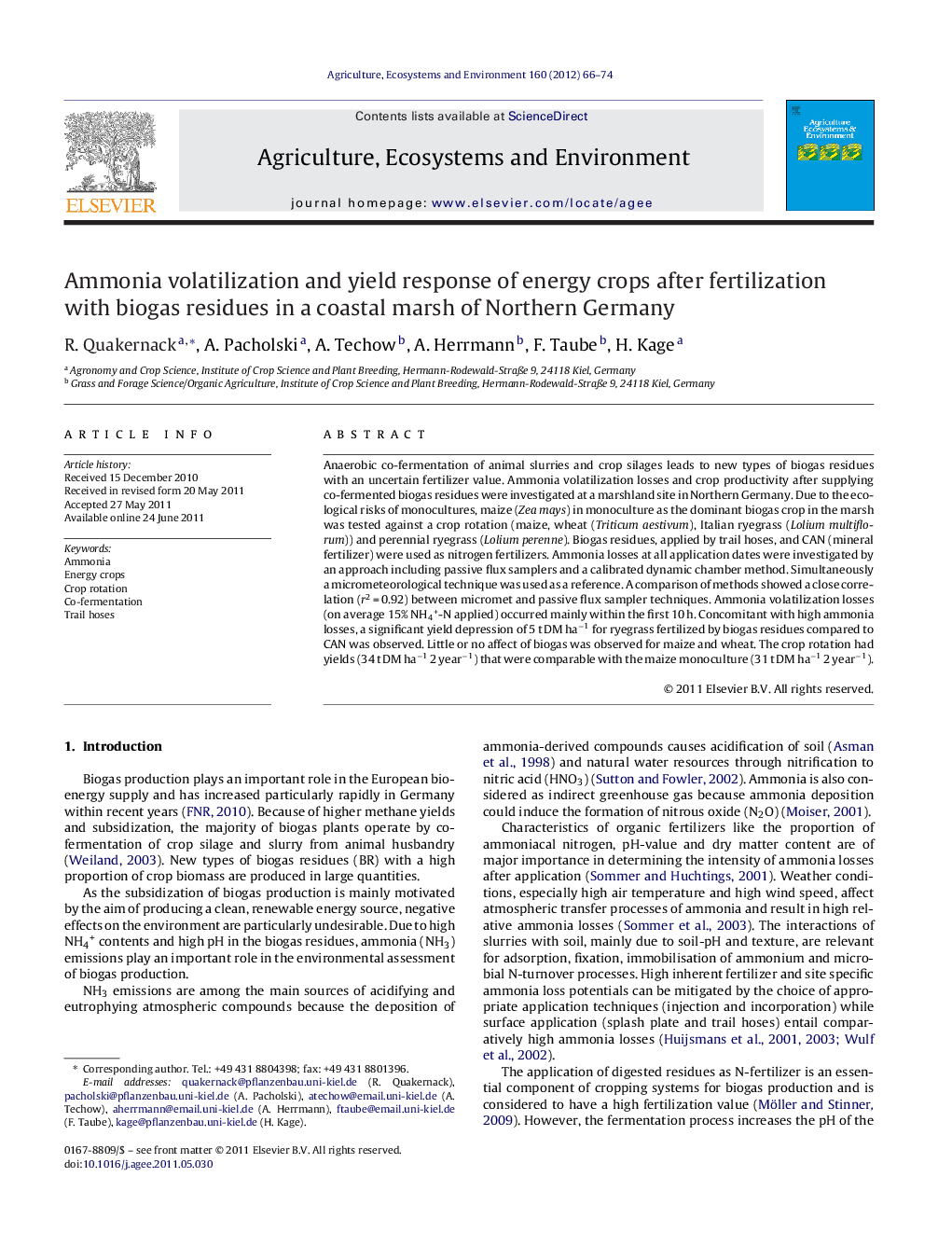| Article ID | Journal | Published Year | Pages | File Type |
|---|---|---|---|---|
| 2414317 | Agriculture, Ecosystems & Environment | 2012 | 9 Pages |
Anaerobic co-fermentation of animal slurries and crop silages leads to new types of biogas residues with an uncertain fertilizer value. Ammonia volatilization losses and crop productivity after supplying co-fermented biogas residues were investigated at a marshland site in Northern Germany. Due to the ecological risks of monocultures, maize (Zea mays) in monoculture as the dominant biogas crop in the marsh was tested against a crop rotation (maize, wheat (Triticum aestivum), Italian ryegrass (Lolium multiflorum)) and perennial ryegrass (Lolium perenne). Biogas residues, applied by trail hoses, and CAN (mineral fertilizer) were used as nitrogen fertilizers. Ammonia losses at all application dates were investigated by an approach including passive flux samplers and a calibrated dynamic chamber method. Simultaneously a micrometeorological technique was used as a reference. A comparison of methods showed a close correlation (r2 = 0.92) between micromet and passive flux sampler techniques. Ammonia volatilization losses (on average 15% NH4+-N applied) occurred mainly within the first 10 h. Concomitant with high ammonia losses, a significant yield depression of 5 t DM ha−1 for ryegrass fertilized by biogas residues compared to CAN was observed. Little or no affect of biogas was observed for maize and wheat. The crop rotation had yields (34 t DM ha−1 2 year−1) that were comparable with the maize monoculture (31 t DM ha−1 2 year−1).
► First extensive ammonia loss study after biogas-slurry application at a marshland site. ► Full coverage of all NH3 emissions within two years from wheat, maize and grass by measurements. ► Average NH3 losses of 15% [NH4-N applied] after application of co-fermented residues by trail hoses. ► High differences of NH3-losses between crops (grass > winter wheat > maize). ► Low N-efficiency of residue application on winter wheat and perennial ryegrass.
